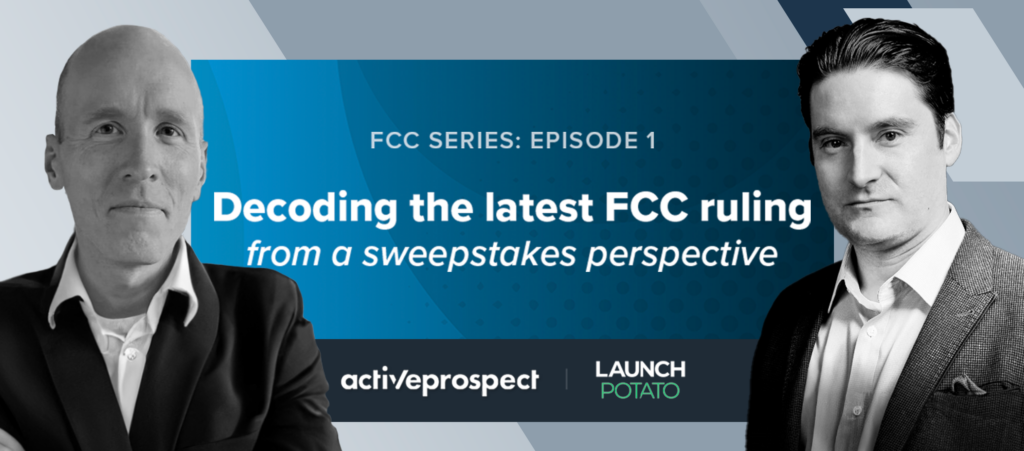
Overview
When the Federal Communications Commission (FCC) introduced updates to the Telephone Consumer Protection Act (TCPA) in December, they aimed to close the “lead generator loophole.” The FCC placed new emphasis on “one-to-one” consent and stated that calls must be “logically and topically associated with the interaction that prompted the consent.”
This change directly impacts the working mechanism of multi-vertical leads and the intriguing “ping post” models – the real-time auction system where leads are sold to companies for instant interaction with the consumer.
In the enlightening first episode of a new FCC-centric webinar series, our Director of Privacy, Security, and Compliance, Benjamin Farrar, sat down with Craig Ready, the esteemed General Counsel from Launch Potato, to share insights about this monumental shift in regulation.
As the updated ruling continues to take shape over the next year, businesses are advised to reassess their risk profiles and take action to prepare for the new regulatory landscape. The journey of adjusting to these new FCC regulations has truly begun, and it’s time to stay alert, informed, and proactive in making strategic decisions.
Watch the entire webinar here
Episode 1 highlights
Introduction
“Thank you for joining us today. I’m Craig, I am General Counsel at Launch Potato… Happy to be here with you all today and excited to talk about the FCC rule on TCPA consent. And as Ben mentioned, when you’re in this part of the industry, anything related to privacy, security, it is never a dull moment and I don’t think it will be for the foreseeable future.”
Understanding the basics of one-to-one consent
“When the FCC finalized its proposal it did two things. Essentially, the first is to make consent, one-to-one… so the company who is going to call the consumer has to be listed on the lead form in clear and conspicuous language. Sort of the other TCPA language that you might be used to, alongside of the name of the company that is going to be making the call, so it has to be one-to-one.”
“It can’t be marketing partners’ links anymore or just multiple entities listed in a row. If that’s what you have been doing, it has to be clear and conspicuous, and there’s some language in the commentary that indicates it needs to be separate pieces where each company is mentioned and the consumer would take some sort of opt-in action to agree for each company listed there to reach out to them… This applies to outbound marketing calls that are done with regulated technology, which is defined as an autodialer. Or, if you’re making pre-recorded or artificial voice calls. That’s where that’s the scope of what’s happening here… The second thing is it adds this layer of ‘logical and topical’ related.”
Logical and topical
“I think a lot of people were really freaking out about the one-to-one consent piece and, and I totally understand that, but when I started reading the commentary and then I got to this part, this was what stood out to me the most because of the lack of clarity… This is a hot mess to me because ‘logical and topical’ is very messy… If you’re going to continue to do these outbound marketing calls using an autodialer, artificial pre-recorded voice, you’ve got to find a way to deal with the logical and topical piece.”
The future of lead gen
“Things will sort of evolve in light of this is, you know? If I know anything about salespeople, account managers, and business leaders, they’re endlessly creative, and they will find ways to make their business model work in light of the rule.”
Helpful Resources
- Learn more about the highest standard for independent proof of consent.
- Discover Ping Pick Post, our proposed solution for the new regulatory landscape.
ActiveProspect is committed to being a guiding force in the lead-gen space as we navigate the evolving regulatory landscape together. Be on the lookout for episode two of our FCC-centric webinar series, coming January 31st.



